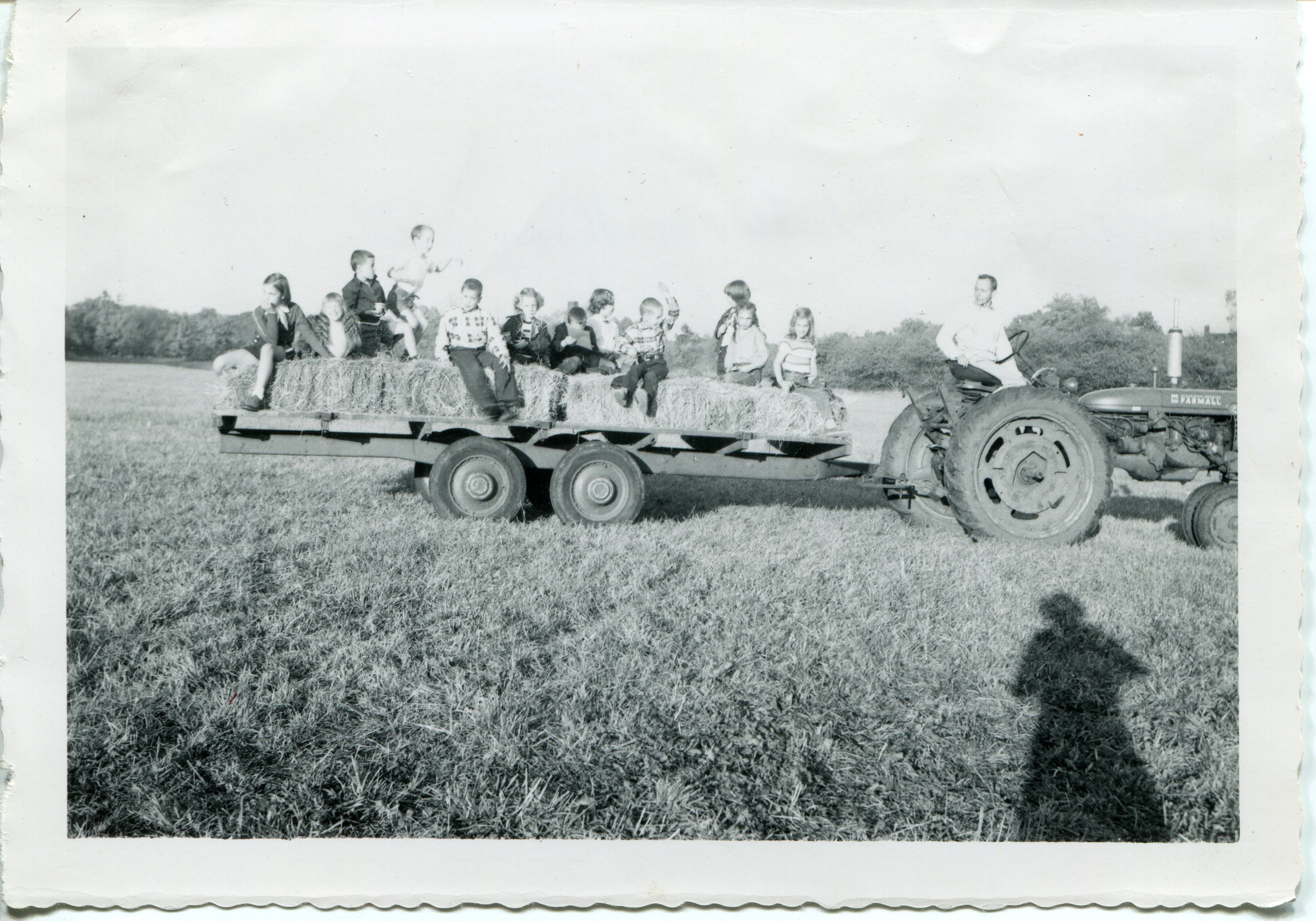A bit of context...
Matlock Farm's history begins with a grant of 750 acres to the immigrant ancestors of the current Flint family, who sailed to New England in the 1630s from Matlock, England. In the first decade of the 18th century, Flint's heir, Captain Ephraim Flint, began to farm the land, building the Flint Homestead in 1709, which currently stands near the end of the North Field on the west side of Lexington Road. By the end of the 19th century, the Boston market was supplied with produce from the Flint farm: fruits from the strawberry field and the apple orchard covering much of North Field, a wide variety of vegetables and pickling cucumbers, and hay from the pasture land.
In the early 20th century, the Flints built four greenhouses, extending the season and allowing for an expanded variety of market crops. Radishes, lettuce, cucumbers, tomatoes and flowers were all grown, but the 1938 hurricane destroyed two of the greenhouses, and in the late 1940's another hurricane took the other two. The farm also survived as a dairy operation throughout parts of the 19th and 20th centuries, but later switched over to beef cattle, which still occupy the farm today.

Land Conservation
A grand effort of grass-roots fund-raising and reduced sale prices, culminating in 1989, successfully preserved Flint Fields, a unique agricultural and historic treasure. Participants included the Flint family, the Lincoln Conservation Commission and other town boards, the Lincoln Land Conservation Trust, abutters, and other committed town residents.
The Warren Flint, Sr. family sold development rights on the South Field for less than half the full market value of the land. The permanent restriction on the field permits continued agricultural use while prohibiting development and other activities inconsistent with the land's natural, scenic and open character. The North Field was sold to the town outright under favorable terms by Henry and Edward Flint, and it is now under cultivation and permanent conservation use. In addition to North and South fields, more Flint property had been previously preserved, such as the 7.3-acre parcel of land donated to the town for conservation purposes in 1979.
Conserving these parcels has been essential to retaining the rural character of the historic center of the Town of Lincoln. Together they act as a testament to the importance of preserving agricultural land, and to the careful stewardship of one family for three and a half centuries.
* Taken from 'A Guide to Conservation Land in Lincoln', Copyright 1992 by The Lincoln Land Conservation Trust
Indigenous Land Acknowledgement
The site of Matlock Farm on what is now known as Lexington Road in Lincoln, Massachusetts, has been under cultivation more or less continuously since at least the seventeenth century, according to available records—though Indigenous communities in the area had enjoyed the region’s rich land for about 10,000 years before that.
The Flint family recognizes that this land that we are a guest on is the ancestral land of the Agawam, Pawtucket, Massa-adchu-es-et and Nipmuc people, and we express our respect to these communities—past, present, and future—whose histories, cultural practices, and lives are bound to the place we now call our home. We also hold profound gratitude for the land and waters that make up the farm and its surroundings. The natural world, which we are a part of, binds all living things together into one interconnected and interdependent community.
We invite you to join us in learning more about the Indigenous peoples on whose homelands Matlock Farm now resides. An excellent resource for starting to learn about this history is Native Land Digital, which visualizes historical Indigenous territories, spoken languages, and treaties between the United States government and Indigenous nations. There are no treaties on this map for the area of New England. This is a result of the time between the arrival of the first English colonizers and the formation of the United States government, as well as the particular history and practices of land seizure in the Northeastern United States.